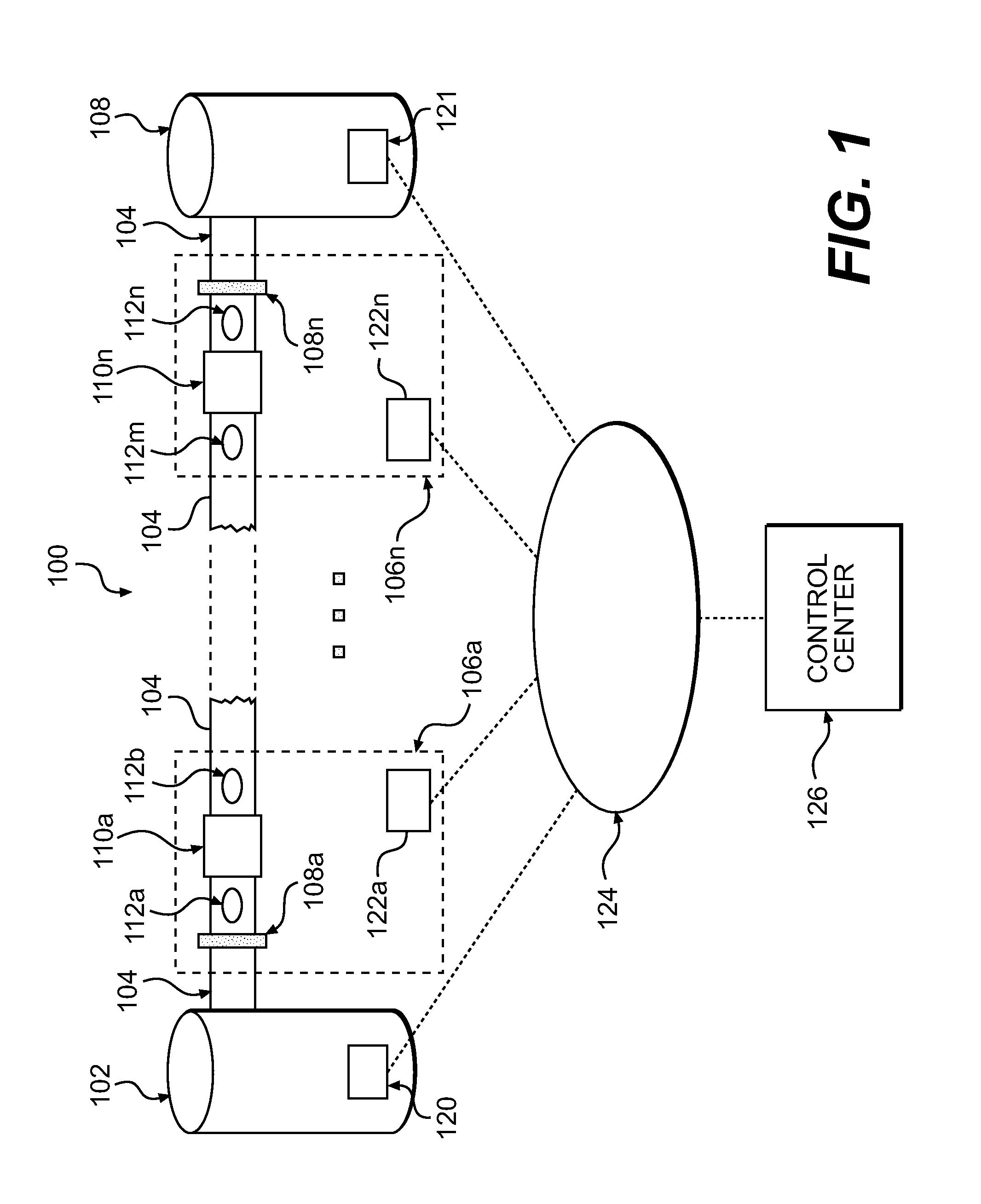Method and apparatus for real time enhancing of the operation of a fluid transport pipeline
a technology of fluid transport pipeline and real-time enhancement, which is applied in the direction of fluid tightness measurement, instrumentation, and measurement of fluid loss/gain rate, can solve the problem of requiring some level of attention for each destabilizing event, and achieve the effect of minimizing any long-term detrimental impact on the pipeline network
- Summary
- Abstract
- Description
- Claims
- Application Information
AI Technical Summary
Benefits of technology
Problems solved by technology
Method used
Image
Examples
Embodiment Construction
[0031]In the following detailed description and example, the invention will be described in connection with its preferred embodiments. However, to the extent that the following description is specific to a particular embodiment or a particular use of the invention, this is intended to be illustrative only. Accordingly, the invention is not limited to the specific embodiments described below, but rather, the invention includes all alternatives, modifications, and equivalents falling within the true scope of the appended claims.
[0032]The present invention is directed to a system and method for detecting the occurrence of destabilizing events in one or more pipeline networks. The terminology “destabilizing event(s)” is intended to encompass any event or activity including but not limited to leaks, ruptures, equipment failures, equipment malfunction, process errors, etc that may have an adverse impact on the stable operation of the pipeline network. In particular, a real-time optimizer ...
PUM
 Login to View More
Login to View More Abstract
Description
Claims
Application Information
 Login to View More
Login to View More - R&D
- Intellectual Property
- Life Sciences
- Materials
- Tech Scout
- Unparalleled Data Quality
- Higher Quality Content
- 60% Fewer Hallucinations
Browse by: Latest US Patents, China's latest patents, Technical Efficacy Thesaurus, Application Domain, Technology Topic, Popular Technical Reports.
© 2025 PatSnap. All rights reserved.Legal|Privacy policy|Modern Slavery Act Transparency Statement|Sitemap|About US| Contact US: help@patsnap.com



